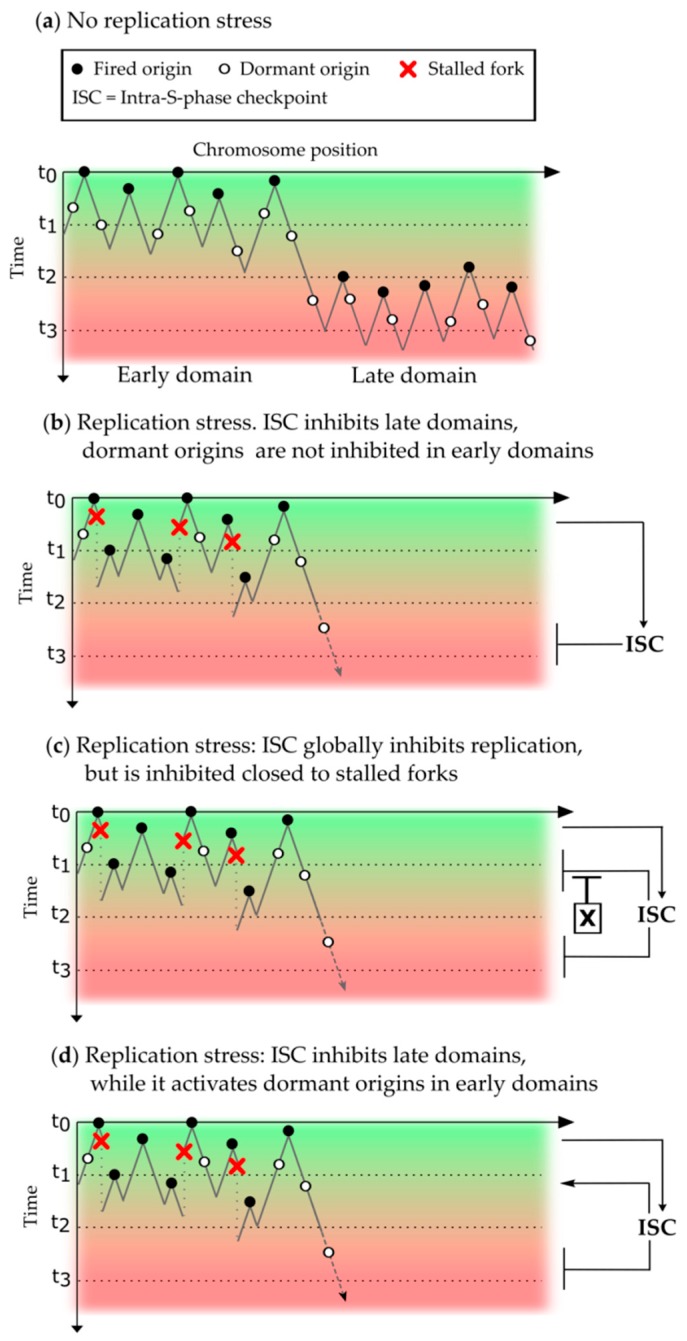Figure 1.
Models of the regulation of the spatio-temporal replication program by the intra-S phase checkpoint. The “y-axis” represents the S phase time, where t0 is the start of S phase and t1 < t2 < t3 are three subsequent arbitrary times smaller than the duration of S phase. The “x-axis” is the chromosomic position. Black lines symbolize replicated DNA, and valleys represent terminations. (a) In the absence of replication stress, replication origins fire in early domains (green region) or late domains (red region). In the presence of replication stress, the intra S phase checkpoint (ISC) inhibits origin activation in late domains and three different models are proposed to explain the firing of dormant origins inside early domains: (b) The ISC passively allows dormant origins firing close to stalled forks. Due to a slight asynchrony between early and dormant origins in early domains, pre-initiation complexes (preICs) on dormant origins might have passed the ISC inhibited steps, (c) ISC action is inhibited inside early domains by an unknown mechanism X, maybe by Plk1 interaction with MCM2-7 [71] closed to stalled forks, and (d) ISC locally activates dormant origins inside early domains by an unknown mechanism.

